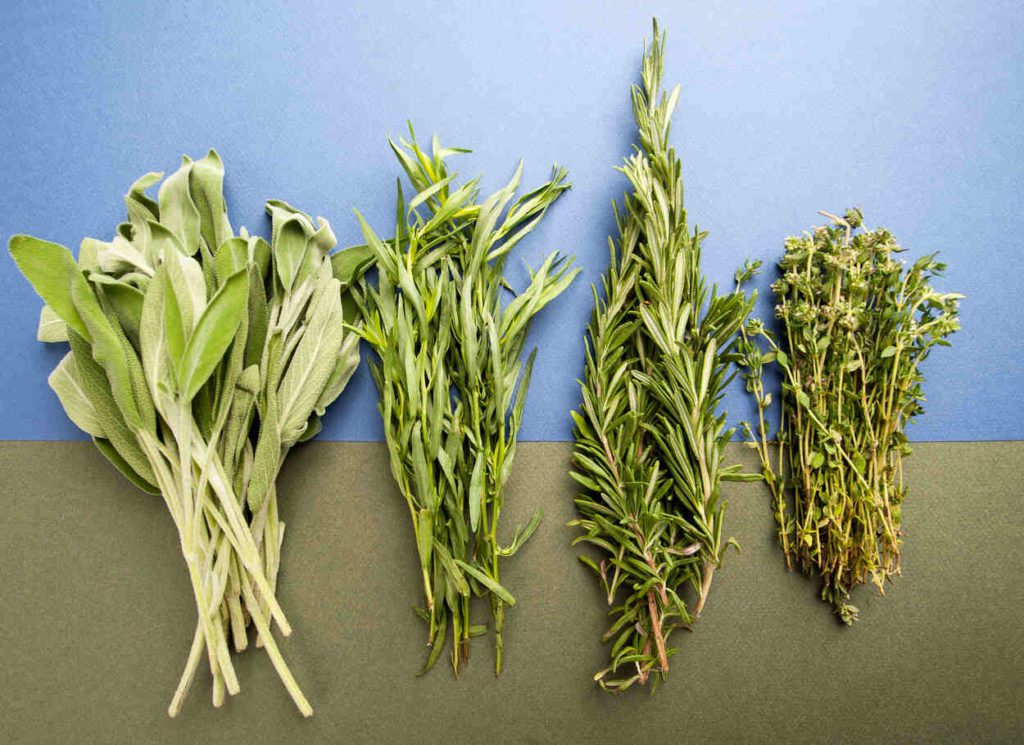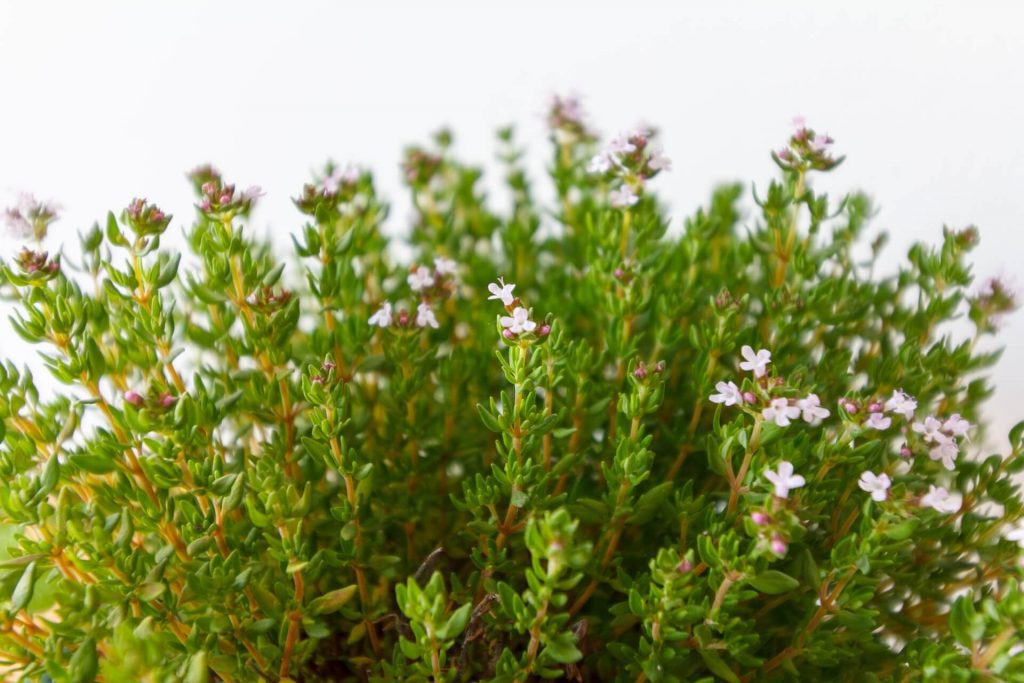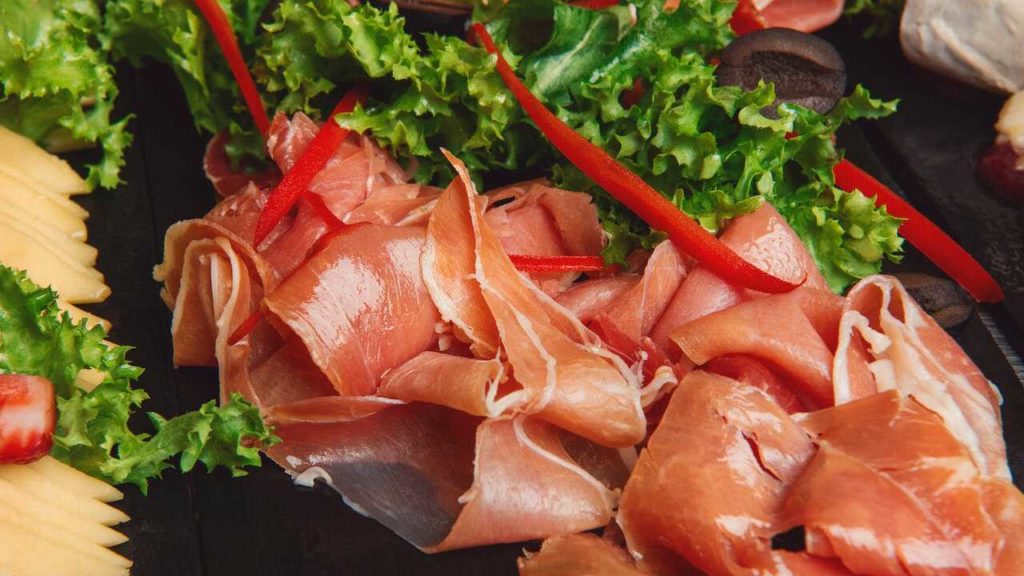Have you ever been in the middle of whipping up a culinary masterpiece, only to realize you’re out of tarragon? Oh, the horror! But wait, before you toss that apron aside in despair, let’s chat. Dive into “Tarragon Substitutes: Elevate Your Culinary Creations with These Flavorful Alternatives.”
Hey, I’ve been there, rummaging through the spice rack, hoping for a miracle. And guess what? There’s always a way out! Together, we’ll uncover some fantastic herbs that can step up to the plate when tarragon decides to play hide and seek. Cooking is as much about improvisation as it is about following a recipe. So, whether you’re a kitchen newbie or a seasoned pro, let’s navigate this herb hiccup and turn it into a flavor fiesta. Ready to sprinkle some culinary magic? Let’s get cooking and make every dish sing, even when tarragon’s gone AWOL! Cheers to delicious detours!
[wpsm_toplist]
What is Tarragon?
Well, tarragon’s this slender, green herb with a licorice-like zing. Hailing from Siberia and Western Asia, it’s the French cuisine’s little secret weapon. You’ve got two types: the fancy French and the laid-back Russian. It’s a game-changer in sauces and poultry dishes. And if it’s playing hide-and-seek in your pantry, don’t sweat it! There are other herbs ready to jump in and save the day. Cooking’s all about improvising, right?
Fresh vs. Dried Tarragon
Have you ever been in that spot where your dish screams for fresh tarragon, but all you’ve got is the dried stuff? Been there! Fresh tarragon is like a burst of spring in your mouth, while dried tarragon packs a more robust punch. But can you swap them? With a little kitchen magic, sure thing! And if both vanish? Well, that’s a tale for another day (hint: hello, tarragon substitutes!). Let’s break it down, side by side:
| Aspect | Fresh Tarragon | Dried Tarragon |
| Flavor | Light, anise-like, slightly sweet | Intense, a bit more concentrated |
| Usage | Best for garnishes and dishes where it’s a star player | Great in slow-cooked dishes, stews, and sauces |
| Substitution | 1 tsp dried = 1 tbsp fresh | 1 tbsp fresh = 1 tsp dried |
| Storage | Refrigerate or freeze | Store in a cool, dark place |
| Availability | Might be seasonal or specialty | Generally available year-round |
Culinary Uses of Tarragon
Have you ever sprinkled this herb on a dish and felt like you’ve been transported to a quaint French café? That’s the magic of tarragon. It’s not just for fancy sauces like béarnaise; it’s a game-changer in simple salads, marinades, and even some zesty cocktails. Think of it as your kitchen’s secret weapon, adding a hint of aniseed flair wherever it goes.
From jazzing up a roast chicken to giving a fresh twist to your homemade vinaigrettes, tarragon’s got your back. And if you’re feeling adventurous, try it in a lemony seafood dish. Trust me, it’s a revelation. So next time you’re looking to elevate your culinary game, remember: a sprinkle of tarragon can make all the difference. Bon appétit!
Challenges with Tarragon
Have you ever found yourself in a cooking quandary, craving that tarragon-infused delight but realizing your herb rack is running on empty? Trust me; we’ve all hit that culinary roadblock. Let’s delve into the quirks of tarragon and how to ace the herb-switcheroo game with some fantastic alternatives.
Tangoing with Tarragon: First off, let’s admit it – tarragon can be quite the kitchen prima donna. Sometimes, it’s nowhere to be found, or it’s decided to take a vacation from your local market. But don’t let that dampen your culinary spirit.
Fresh vs. Dried Dilemma: Here’s the kicker. Fresh tarragon and its dried counterpart are like different players on the same team. They’re related, sure, but they have their own unique vibes. Fresh tarragon’s got that punchy licorice zing, while dried tarragon is more of the mellow elder statesman. So, what’s your game plan when the recipe calls for one, and you’ve got the other?
Meet the Tarragon Stand-Ins: This is where the real fun begins. We’re talking about a herb squad that includes basil, chervil, dill, and a bunch more. Each brings its own distinct groove to the flavor party. Choose your dance partner wisely, and you’ll be amazed at the taste symphony you can create.
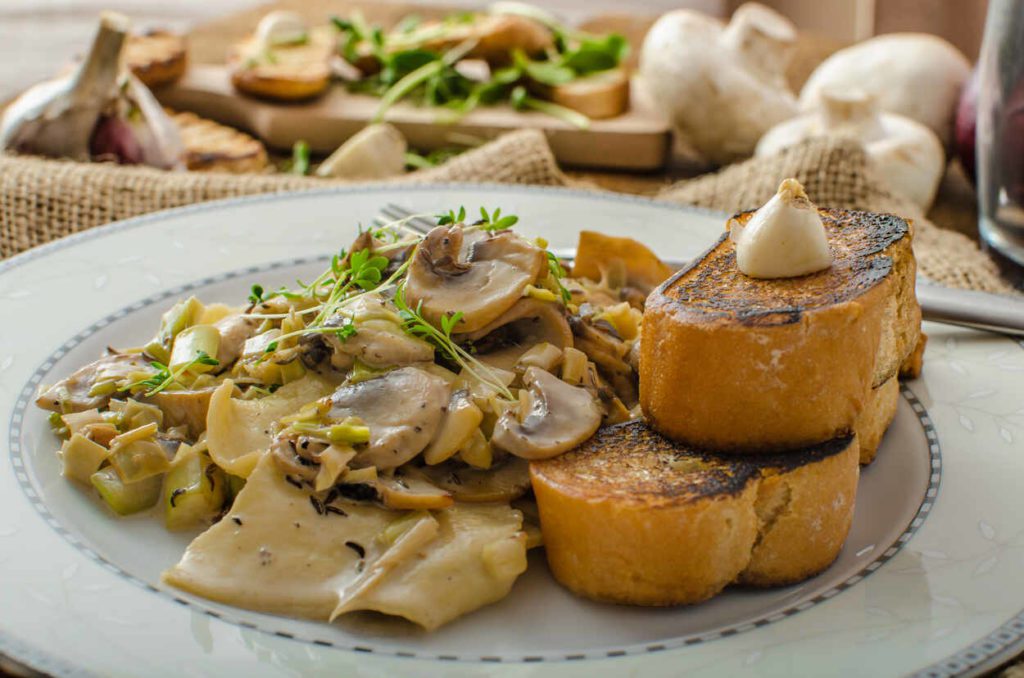
Fresh Tarragon Substitutes!
Ah, the aromatic world of herbs, where tarragon holds a special place in our hearts and kitchens! But what happens when this star herb takes a little hiatus from our spice racks? No worries, my friend, we’ve got some delightful tarragon substitutes that will keep your culinary creations singing with flavor.
Flavor Profiles: Imagine a soft whisper of anise, a subtle hint that doesn’t shout but gracefully enhances your dishes. That’s chervil for you!
Key Dishes: From classic French sauces to light, airy salads, chervil gently infuses its delicate essence without overshadowing other flavors.
Recipe: Picture this: a fluffy omelette, kissed with the mild, anise-like whisper of chervil, and filled with golden, sautéed mushrooms. Simple, yet utterly divine.
A Little Story: Julia, a dear friend and culinary maestro, once shared, “When tarragon plays hard to get, chervil gracefully steps into the spotlight, offering a gentle anise hug to your dishes.”
Flavor Profiles: Think of fennel fronds as tarragon’s bolder cousin, offering a sweet, anise-like punch with a bit more pizzazz!
Key Dishes: From vibrant Mediterranean creations to refreshing salads, fennel fronds add a bold, fresh note that elevates a dish splendidly.
Recipe: Envision a salad where crispy fennel slices dance with juicy orange segments, all drizzled with a zesty vinaigrette and crowned with lush fennel fronds. Refreshing and vibrant!
A Little Story: Nonna, with her Italian roots, always said, “Fennel is the heartbeat of our kitchen!” Those fronds were her secret to turning simple dishes into vibrant culinary symphonies.
Flavor Profiles: Basil, with its sweet and slightly spicy character, may not be the first herb you think of, but oh, it’s a delightful surprise in tarragon-centric dishes!
Key Dishes: From classic Italian pestos to tomato-rich creations, basil brings a sweet, peppery warmth that lights up a dish beautifully.
Recipe: Imagine freshly cooked pasta enrobed in a lush basil pesto, where every bite is a burst of sweet, herby goodness. Simplicity at its finest!
A Little Story: When my neighbor generously shared a bounty of basil one summer, it found its way into my chicken salad, replacing tarragon, and what a sweet, peppery revelation it was!
Embarking on this flavorful journey with chervil, fennel fronds, and basil isn’t merely about finding a substitute for tarragon; it’s about opening your culinary world to new, exciting flavors. So, let’s explore, experiment, and perhaps discover a new favorite herb along the way.
Dried Tarragon Substitutes!
Hey there, fellow food lover! Have you ever had that moment where you’re mid-recipe, and you realize you’re out of dried tarragon? Yep, been there, done that. But don’t fret! I’ve got your back with some fantastic tarragon substitutes that have saved my culinary skin more times than I can count.
Flavor Profiles: Picture a sweet, citrusy, and slightly woody note. That’s dried marjoram for you. It’s like tarragon’s distant cousin who studied abroad and came back with a hint of European flair.
Key Dishes: From Italian pasta sauces to Greek salad dressings, marjoram subtly steps in, adding that special touch without stealing the show.
Recipe: Marjoram Drizzle:
- Warm up some olive oil, throw in a pinch of dried marjoram, and voila! You’ve got yourself a versatile drizzle for salads, bread, and more.
From My Kitchen: Aunt Mabel always said, “When in doubt, marjoram it out!” And honestly? She was onto something.
Flavor Profiles: Think of a zesty, slightly tangy kick. That’s dried dill for you. It’s like tarragon’s adventurous sibling who’s always up for a good time.
Key Dishes: Fish tacos, creamy tzatziki, or even a simple potato salad – dill just adds that extra oomph!
Recipe: Zesty Dill Butter:
- Melt some butter, sprinkle in dried dill, add a squeeze of lemon, and you’ve got a game-changer for your grilled fish.
From My Kitchen: I once swapped tarragon with dill in a pinch, and let me tell you, it was a game-changer. Who knew?
Flavor Profiles: Oregano is like the robust, confident friend we all need in our lives. It’s hearty, a tad bitter, and oh-so-warm.
Key Dishes: Be it a hearty pizza or a spicy taco, oregano is the friend who ensures you’re always in good company.
Recipe: Oregano Magic Marinade:
- Mix dried oregano with garlic, a splash of olive oil, and a dash of red wine vinegar. Trust me; it’s magic in a bottle.
From My Kitchen: On a trip to Italy, I discovered the magic of oregano. It’s not just a substitute for tarragon; it’s a flavor-packed journey of its own.
So, the next time you’re in a tarragon pinch, remember these trusty tarragon alternatives. They’re not just stand-ins; they’re stars in their own right. Dive in, experiment, and let your taste buds embark on a new adventure.
Read more about Thyme and its alternatives.

Unique Tarragon Substitutes!
Let’s chat about tarragon, that distinct, anise-flavored herb that has a knack for turning dishes from ordinary to extraordinary. But what do you do when it’s nowhere to be found? Don’t worry, and I’ve got a few unique tarragon substitutes that might just steal the spotlight in your next culinary creation!
Flavor Profiles: Picture tarragon, but make it a party! Tagetes brings a lively, slightly sweet, and somewhat anise-like flavor with a zesty twist.
Key Dishes: It’s a star in everything from hearty stews to delicate desserts, where its vibrant flavor can truly shine.
Recipe: Tagetes-Infused Cream:
- Infuse heavy cream with dried Tagetes and use it to whip up a lush, flavorful custard or ice cream that’s a culinary adventure in itself.
Personal Insights: My buddy Carlos introduced me to Tagetes in a dessert, and oh my, it was a revelation! It brought that familiar anise note but with a surprising, citrusy twist that was utterly delightful.
Flavor Profiles: Fresh parsley brings a clean, slightly peppery note, and when paired with a dash of cinnamon, it mimics tarragon’s unique flavor in a surprisingly delightful way.
Key Dishes: Think salads, light sauces, and chicken dishes where this duo can add a fresh yet slightly spicy note.
Recipe: Parsley and Cinnamon Gremolata:
- Mix chopped parsley with a dash of cinnamon and minced garlic for a fresh, zesty gremolata that can elevate grilled meats and veggies.
Personal Insights: I was a bit skeptical when my cousin Lina suggested this combo, but it turned out to be a delightful surprise, adding a fresh and slightly exotic flavor to my usual dishes.
Flavor Profiles: Herbes de Provence brings together thyme, marjoram, and sometimes lavender, offering a complex, slightly floral, and savory flavor profile.
Key Dishes: It’s wonderful in roasted meats, veggies, and classic French dishes where its complex flavors can truly shine.
Recipe: Herbes de Provence Roasted Chicken:
- Generously season a chicken with Herbes de Provence, garlic, and olive oil, then roast until golden and juicy.
Personal Insights: During a trip to France, I discovered the multifaceted flavors of Herbes de Provence. It’s not just a tarragon substitute; it’s a bouquet of flavors that transport your dishes to the French countryside.
Embarking on a culinary journey with these unique tarragon substitutes is not just about finding a quick fix. It’s about exploring new flavors, creating unexpected combinations, and perhaps stumbling upon a new favorite. So, dive in, experiment, and let these tarragon alternatives whisper their unique flavors into your dishes. And remember, the best dishes often come from a dash of daring and a sprinkle of adventure!
Tips and Tricks for Making Herb Substitutions
Have you ever been elbows deep in a recipe, only to realize you’re out of a vital herb like tarragon? Oh, I’ve been there, and the panic is real! But fear not, because I’m here to share some of my kitchen wisdom on making herb substitutions, especially focusing on those tarragon substitutes that have turned potential disasters into delicious triumphs!
1️⃣ Dive into the Flavor Journey
Tip: Know your herb’s flavor adventure!
Heartfelt Advice: Understanding the core flavor of the herb you’re replacing is crucial. Whether it’s peppery, citrusy, or earthy, finding a substitute with a similar vibe will keep your dish singing the right tune.
2️⃣ Fresh vs. Dried: The Art of Substitution
Tip: Keep the 3:1 ratio in mind, fresh to dried.
Heartfelt Advice: If you need 1 tablespoon of fresh herbs and only have dried, a teaspoon of the dried stuff will do the trick. This little nugget of knowledge has been a dish saver!
3️⃣ Finding Flavor Twins: Similar Tastes Unite
Tip: Identify herbs that are flavor twins!
Heartfelt Advice: Some herbs are like siblings in the flavor world; think parsley and cilantro or rosemary and thyme. When you’re stuck, consider what might have a similar flavor profile and give it a whirl.
4️⃣ Blend it Up: Crafting a Flavorful Fusion
Tip: Don’t shy away from creating a blend!
Heartfelt Advice: Sometimes, combining two different herbs can create a similar flavor to another. Like, blending basil and mint can give you a tarragon vibe, or parsley with a hint of lemon zest can be a great coriander stand-in.
5️⃣ Trust Your Tastebuds: The Ultimate Flavor Guide
Tip: Always, always do a taste test.
Heartfelt Advice: Before you toss your substitute into the mix, try a little with a few ingredients and give it a taste. If it works, fabulous; if not, it’s back to the flavor drawing board!
6️⃣ A Gentle Hand: Start Small, Build Bold
Tip: Start with a smaller dash and build to a flavor crescendo.
Heartfelt Advice: When you’re substituting, start with half of what’s recommended and gradually add until you hit the flavor jackpot. Remember, you can always add, but you can’t take away!
Navigating through the world of herb substitutions, especially when it comes to finding the perfect tarragon alternatives, can be a fun and flavorful adventure rather than a culinary roadblock.
Read more about Marjoram alternatives.
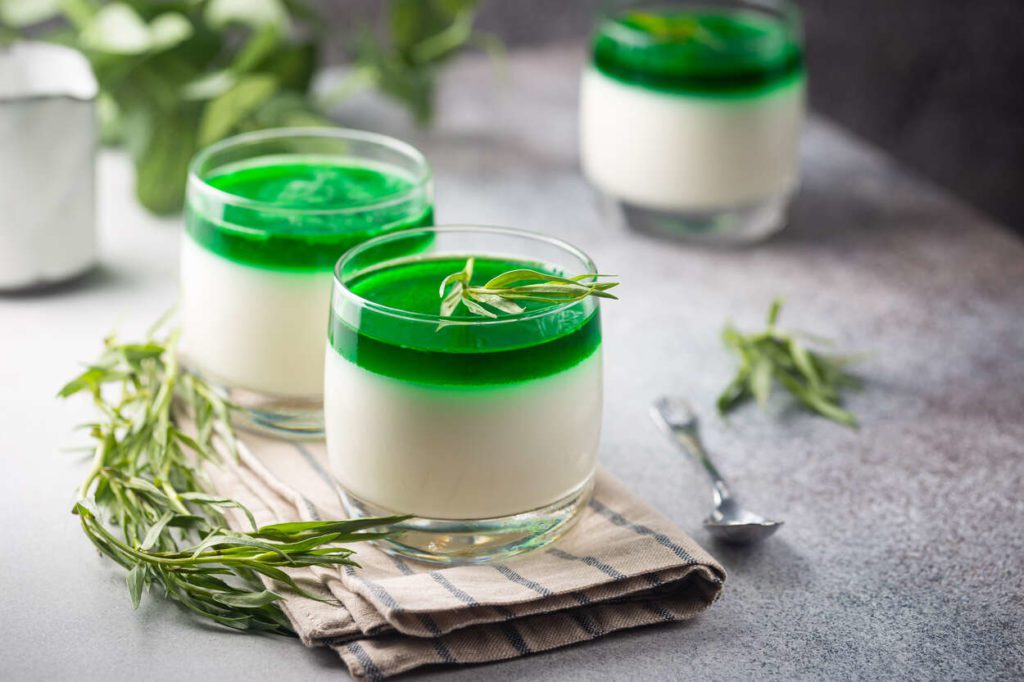
Creating Your Own Tarragon Replacement
Oh, the joy of cooking! But wait, we’ve all been there, haven’t we? Mid-recipe, and bam, no tarragon in sight. A dash of panic, a sprinkle of frustration, but hey, let’s turn that culinary conundrum into a flavorful, fun ride, shall we?
Embracing the Essence of Tarragon
Let’s chat, just you and me, about that sweet, licorice-like charm of tarragon. It’s not just an herb; it’s a flavor journey, an aromatic whisper that says, “this dish, my friend, is something special.”
Choosing Your Culinary Companions
Chervil, with its subtle whispers of anise, often comes to the rescue. But what about basil or dill, bringing their own vibrant tales to our culinary narrative? They might not be the spitting image of tarragon, but oh, the stories they can tell in a dish!
A Sweet Little Secret
Here’s a little whisper from my kitchen to yours: a smidge of fennel seeds. They carry that sweet, anise-like melody that can elevate your base herb and dance gracefully in your dishes.
The Joyful Journey of Mixing and Matching
Let’s get a little wild, shall we? Parsley and a dash of cinnamon? Dill, playfully mingling with a sprinkle of dried oregano? Your kitchen, your rules! Taste, tweak, and maybe, just maybe, you’ll create a blend that’s uniquely yours.
Preserving Your Flavorful Creations
Once you’ve crafted your blend, tuck it into an airtight container. Keep that vibrant freshness locked in, and voila, your homemade tarragon alternatives are ready to dazzle whenever you need them.
Your Culinary Tales
I’m all ears, dear friends! How did your blending escapade go? Are there any surprising combinations or perhaps a blend that we should politely forget about? Let’s share, laugh, and face-palm together.
In a nutshell, while tarragon holds its own special place, creating your own tarragon substitutes is like penning your own culinary tale. Trust your palate, embrace the unexpected, and, above all, sprinkle every step with joy.
FAQ
What Is A Good Substitute For Tarragon?
If you’re swapping out fresh tarragon, fresh fennel fronds, anise, or chervil are your pals, offering a similar anise-like whisper. For the dried version, dried dill, marjoram, or a smidge of dried fennel seeds can come to your rescue!
Can You Substitute Dried Tarragon For Fresh Tarragon?
Yes, indeed, but remember the golden ratio! Typically, you’ll want to use three times the amount of fresh tarragon when substituting for dried, and a third for the opposite swap. So, 1 teaspoon of dried equals 1 tablespoon of fresh.
What Can I Substitute For Tarragon In Bearnaise Sauce?
Chervil is your friend here, offering a gentle anise flavor akin to tarragon in your Bearnaise sauce. If chervil is playing hard to get, try a blend of parsley and a dash of fennel seeds to get that tarragon vibe.
What can I use instead of tarragon with chicken?
Basil makes a delightful tarragon substitute in chicken dishes, offering a fresh, slightly sweet note. If you’re feeling adventurous, rosemary can also step in, offering a hearty, earthy flavor.
What Can I Use Instead of Tarragon in Salads without the Anise Flavor?
Fresh parsley is your go-to non-anise flavored substitute for tarragon in salads. It brings a crisp, clean taste that will keep your salads fresh and lively.
Can I Use Tarragon Vinegar in Place of Dried Tarragon?
Yes, but tread lightly! Tarragon vinegar will introduce both tarragon flavor and acidity, so you might need to tweak other acidic ingredients in your recipe to keep things balanced.
Wrapping up..
Tarragon is a magnificent herb and spice you can afford in the market, and in this article, we have let you learn on the substitutes for Tarragon too. As it’s not common to have a green thumb to get these spices all the time; it’s better to buy these from the market and most of them are not expensive too. We’ve got ours; it’s your turn now! Have a good day!
Have more insights? Add them by commenting below.

